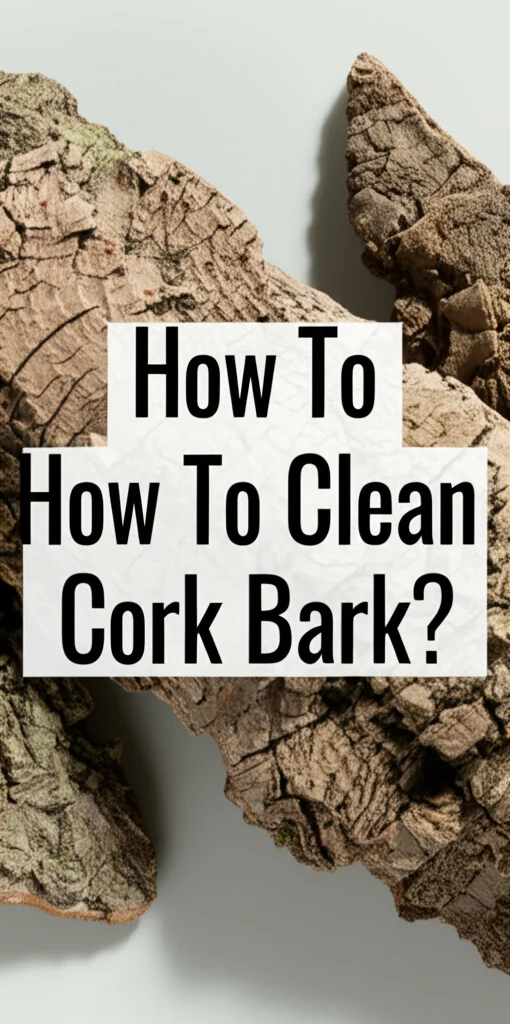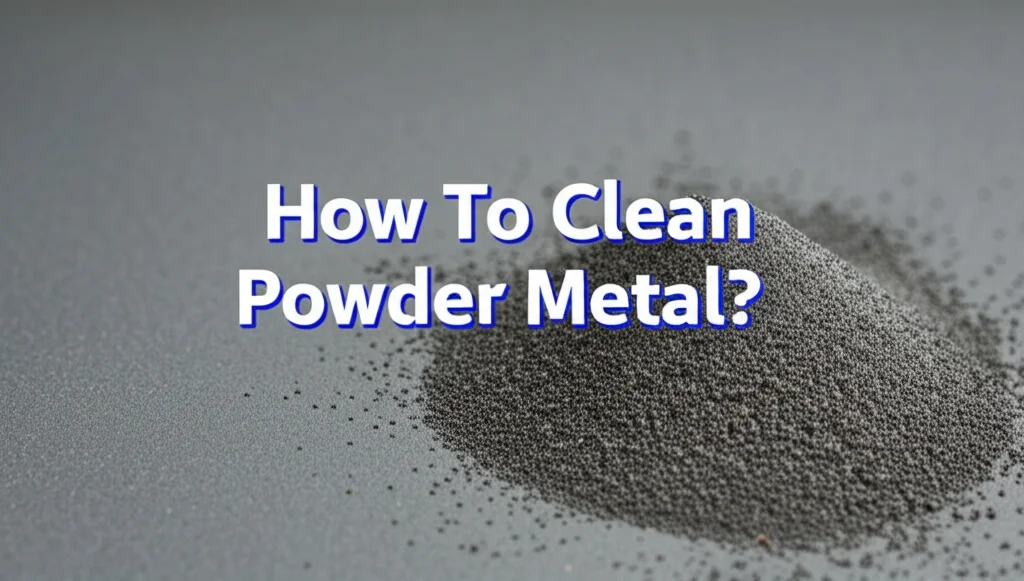· Home & Garden · 6 min read
How To Clean Cork Bark?

How to Clean Cork Bark: A Complete Guide
Have you noticed your beautiful cork bark looking a little dull or dirty? Cork bark is a fantastic natural material used in terrariums, reptile habitats, and even home décor, but it does require occasional cleaning. This article will walk you through everything you need to know about how to clean cork bark safely and effectively, keeping it looking its best for years to come. We’ll cover gentle methods, preventative care, and what to avoid when cleaning this unique material.
Takeaway:
- Use gentle methods like brushing and wiping with a damp cloth.
- Avoid harsh chemicals and excessive soaking.
- Disinfect with a reptile-safe solution if needed.
- Allow the cork bark to dry completely before reuse.
Quick Answer:
To clean cork bark, gently brush off loose debris, then wipe with a damp cloth and mild soap if needed. Rinse thoroughly with clean water and allow it to air dry completely before returning it to its intended use. Avoid harsh chemicals and prolonged soaking.
Why Does Cork Bark Need Cleaning?
Cork bark, sourced from the outer layer of cork oak trees, is naturally porous. This porosity is what makes it so great for retaining moisture in terrariums and providing a good grip for reptiles. However, this also means it can easily accumulate dirt, dust, and even algae. Regular cleaning isn’t just about aesthetics; it’s about maintaining a healthy environment. For reptile habitats, a dirty cork bark can harbor bacteria and fungi, potentially harming your pet. For decorative purposes, buildup can detract from its natural beauty. Keeping it clean ensures longevity and a visually appealing look.
Gentle Cleaning: The First Line of Defense
Often, the simplest cleaning methods are the most effective. Before reaching for any cleaning solutions, start with a gentle approach. This is especially important for cork bark used in sensitive environments like reptile enclosures. A soft-bristled brush, like a toothbrush or a small paint brush, is your best friend here.
- Dry Brushing: Use the brush to gently remove loose dirt, dust, and debris. Pay attention to crevices and textured areas where particles tend to accumulate.
- Damp Cloth Wipe: Slightly dampen a clean cloth with water. Wring it out well so it’s not dripping wet. Gently wipe the surface of the cork bark to remove any remaining dirt.
- Air Dry: Allow the cork bark to air dry completely before returning it to its original location. Direct sunlight can cause it to become brittle, so dry it in a shaded area.
Cleaning Cork Bark with Mild Soap
If dry brushing and a damp cloth aren’t enough, you can use a very mild soap solution. The key here is mild. Harsh chemicals can damage the cork and potentially be harmful to any animals that come into contact with it. Dish soap, diluted significantly with water, is a good option.
- Dilution is Key: Mix a tiny drop of dish soap with a large bowl of warm water. You want a very weak solution.
- Gentle Application: Dip a clean cloth into the soapy water, wring it out thoroughly, and gently wipe the cork bark.
- Thorough Rinse: Rinse the cork bark thoroughly with clean water to remove all traces of soap. Residual soap can cause irritation or affect the environment it’s used in.
- Complete Drying: Again, allow the cork bark to air dry completely before use.
Disinfecting Cork Bark: When and How
Sometimes, you need to do more than just clean; you need to disinfect. This is particularly important for reptile habitats where maintaining a sterile environment is crucial. However, not all disinfectants are safe for use around animals.
- Reptile-Safe Disinfectants: Look for disinfectants specifically labeled as safe for reptiles. These are available at most pet stores.
- Dilution and Application: Follow the manufacturer’s instructions for dilution and application. Typically, you’ll spray the disinfectant onto the cork bark and allow it to sit for a specified amount of time.
- Thorough Rinse (Again!): After disinfecting, rinse the cork bark extremely thoroughly with clean water to remove all traces of the disinfectant.
- Consider a Quarantine Period: After disinfecting, it’s a good idea to let the cork bark air dry and “off-gas” for a day or two before returning it to the habitat. This ensures any lingering fumes dissipate. You can find more information on safe reptile habitat cleaning at https://www.beacleaner.com/how-to-clean-luxury-vinyl-plank-flooring/.
Dealing with Algae Growth on Cork Bark
Algae growth is common, especially in humid environments like terrariums. It’s usually harmless, but it can be unsightly. Here’s how to tackle it:
- Manual Removal: Gently scrape off the algae with a soft brush or a plastic scraper. Avoid using metal tools, as they can damage the cork.
- Vinegar Solution (Use with Caution): A very diluted vinegar solution (1 part vinegar to 10 parts water) can help kill algae. Apply it sparingly with a cloth, let it sit for a few minutes, and then rinse thoroughly. Always test this solution on a small, inconspicuous area first to ensure it doesn’t discolor the cork.
- Improve Ventilation: Increasing ventilation in the terrarium can help prevent algae growth by reducing humidity.
What to Avoid When Cleaning Cork Bark
Knowing what not to do is just as important as knowing what to do. Here are some things to avoid when cleaning cork bark:
- Harsh Chemicals: Avoid bleach, ammonia, strong detergents, and any other harsh chemicals. These can damage the cork and be harmful to animals.
- Prolonged Soaking: Don’t soak the cork bark in water for extended periods. This can cause it to become waterlogged, lose its shape, and potentially rot.
- High Heat: Avoid using hot water or placing the cork bark in direct sunlight to dry. High heat can cause it to crack and become brittle.
- Abrasive Cleaners: Don’t use abrasive cleaners or scouring pads, as they can scratch the surface of the cork.
- Dishwashers: Never put cork bark in the dishwasher. The high heat and harsh detergents will destroy it.
FAQ: Your Cork Bark Cleaning Questions Answered
Q: Can I use rubbing alcohol to clean cork bark?
A: It’s generally not recommended. While rubbing alcohol is a disinfectant, it can dry out the cork and potentially damage it. If you need to disinfect, opt for a reptile-safe disinfectant instead.
Q: How often should I clean my cork bark?
A: The frequency depends on its use. For reptile habitats, clean it every 1-2 weeks. For decorative purposes, cleaning every few months is usually sufficient.
Q: Will cleaning affect the cork bark’s texture?
A: Gentle cleaning methods shouldn’t significantly affect the texture. However, harsh chemicals or abrasive cleaners can damage the surface.
Q: My cork bark has a stubborn stain. What can I do?
A: Try making a paste of baking soda and water and gently applying it to the stain. Let it sit for a few minutes, then rinse thoroughly. You can learn more about removing residue from surfaces at https://www.beacleaner.com/how-to-remove-baking-soda-residue-from-carpet/.
Conclusion: Keeping Your Cork Bark Pristine
Cleaning cork bark doesn’t have to be a daunting task. By following these simple guidelines, you can keep your cork bark looking beautiful and maintain a healthy environment for your reptiles or enjoy its natural aesthetic in your home décor. Remember to prioritize gentle cleaning methods, avoid harsh chemicals, and always allow the cork bark to dry completely before reuse. With a little care, your cork bark will continue to provide beauty and functionality for years to come. If you’re looking for more cleaning tips for your home, check out our guide on https://www.beacleaner.com/how-to-clean-hardwood-floors-with-vinegar/ for a sparkling clean home!




